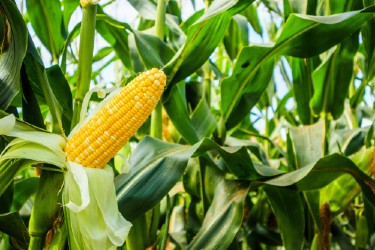Maize cultivation becomes more popular in Poland with still, ongoing expanding share in total crop production structure. This is shown by the significantly increasing areas allocated by farms for sowing from year to year. In 2013, production exceeded almost 4.5 million tons, which makes maize one of the most important cereals in Poland.
This results in a strong development of cultivation technology and a systematic increase in the outlay allocated to its production. As the acreage grows, so do the awareness and skills in growing this plant. Maize from our native crops is mainly used for:
- animal feed,
- food production (e.g. flour, corn flakes),
- biogas,
- ethanol,
- pharmaceuticals, etc.
Success in maize production is based on the selection of hybrid varieties with an early stage appropriate for a given growing area and adapted to the purpose of use. The earliness of hybrids is determined by the FAO number. Earlier hybrids have a lower FAO number than later ones.
Maize is a thermophilic plant with an intensive germination process. It should be sown warm climate in the soil heated to the temperature of about 9-10°C. Depending on the type of soil, the sown seed should be 6 cm deep (4-6 cm on compact soils and 6-8 cm on light soils). The soil should have a controlled pH above 5.5, contain as much hummus as possible and at least average amount of assimilable forms of phosphorus, potassium and magnesium. The phenological indicator of the beginning of maize sowing is the flowering of black currants, cherries and dandelions. In the south and west, this date falls in the third decade of April, in the east and north - between May 1st-5th. Due to its deep, well-developed root system, maize is a species resistant to short-term water shortages.
Maize produces about 45-60 t of green matter/ha. To cover this demand, the plant should be supplied depending on its intended use:
Intended for grain: with a yield of 1 t of grain and an appropriate amount of straw, it consumes on average: 30 kg nitrogen (N), 12 kg phosphorus (P2O5), 30 kg potassium (K2O), 10 kg calcium (CaO), 10 kg magnesium (MgO), 4 kg sulfur (S) or 10 kg as SO3, and 11 g of boron (B), 14 g of copper (Cu), 110 g of manganese (Mn), 0.9 g of molybdenum (Mo) and 85 g of zinc (Zn). It shows high sensitivity to zinc deficiency and average to boron, manganese and copper deficiency. It takes about twice as much calcium and 2-3 times more magnesium and boron than other cereals.
Intended for silage: with a yield of 10 tons of green fodder, it usually consumes: 38 kg of nitrogen (N), 16 kg of phosphorus (P2O5), 45 kg of potassium (K2O), 20 kg of calcium (CaO), 12 kg of magnesium (MgO), 5 kg of sulfur (S) or as SO3 - 12.5 kg and 17 g of boron (B), 13 g of copper (Cu), 150 g of manganese (Mn), 1.5 g of molybdenum (Mo) and 150 g of zinc (Zn). It shows high sensitivity to zinc deficiency and average to boron, manganese and copper deficiency.
The most important nutrients in both grain and silage maize are phosphorus and potassium. They are taken up in significant amounts during the entire growing season of the plant. Consequently, deficiencies of these elements reduce the yield and its quality. According to EKOPLON fertilization recommendations, you should apply fertilizers enriched with phosphorus and potassium at the stage of at least 4 leaves, e.g. 3-4 kg/ha of MAXIMUS Platinum extra PK, and in the 8-10 leaves stage, the complex fertilizer MAXIMUS Platinum 20+20+20 at 3-4 kg/ha. The date of foliar fertilization depends on the fact that maize begins to absorb nutrients from the environment only from the 2-4 leaves stage. The use of zinc in a double dose will ensure the plant's proper development. It is recommended to perform the first treatment with EKOLIST mono Zinc at a dose of 2-3 l/ha in the 3-6 leaves stage and repeat the treatment in the 8-10 leaves stage. Additionally, in this stage, 1 l/ha of EKOLIST mono Boron should be used. Comprehensive supply of zinc, boron, manganese and copper will be ensured by using MAXIMUS AminoMicro Maize foliar fertilizer at 0.5-1 kg/ha, a fertilizer with increased content of the necessary microelements.

Fertilization technologies
Taking into account the different expectations of farmers in terms of crop nutrition, we have prepared for you three complete proposals for foliar fertilization.
The following technologies have been prepared in response to these expectations, in order to optimally nourish the crop and are for reference. If you have any questions regarding the details of the technology and the adjustment of the individual dosage of the indicated products, we invite you to contact our Team.
















